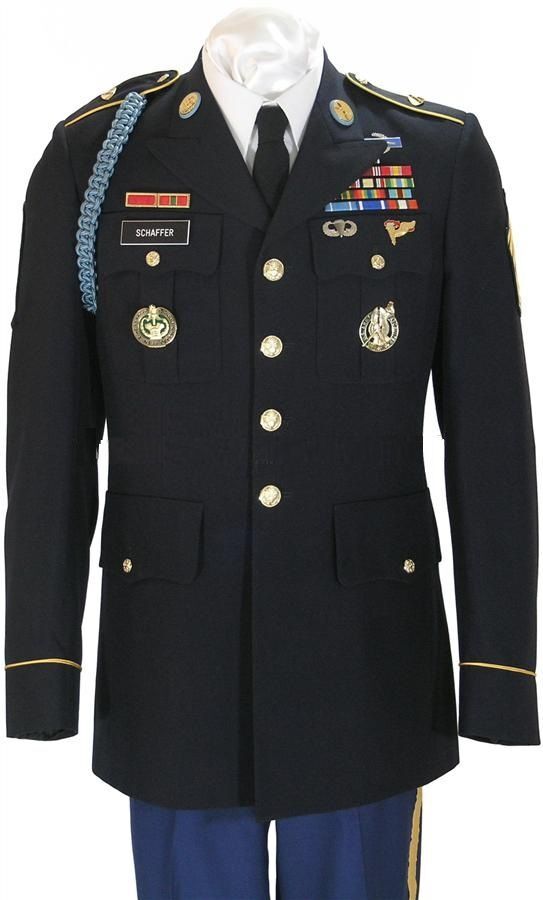A Guide to Army Dress Uniforms
Posted by Kevin Green on Aug 15th 2023
Generally speaking, Army and other military uniforms represent the uniformity, discipline, professionalism, and honor of each service member and their military branch. Each branch has its own set of uniforms, which all serve a specific purpose. Though the first Army uniform that comes to mind for many is the combat uniform, there is another uniform that holds great significance: the dress uniform. A uniform with a rich history, dress uniforms are the attire worn for more professional or formal occasions such as a military ceremonial event or national holiday. Keep reading our guide to learn how to wear an Army dress uniform and how it's changed over the years.
Army Dress Uniform Guide: A Brief Look
Army dress uniforms typically consist of a formal jacket or coat, slacks/pants or skirt, a belt, a dress shirt, and a pair of dress shoes. Keep in mind that aspects of the uniform can vary between men and women, as well as between general officers and enlisted personnel. Awards, decorations, and insignia also get prominently displayed on these uniforms, including patches, bars, and other uniform accessories.
How to Wear an Army Dress Uniform: History
Before we go over the contemporary Army dress uniform guide, let’s take a look back in time. The designs of 19th and 20th-century Army uniforms, including the more formal ones, were greatly influenced by both British and French traditions. Uniforms were marked by headwear, dress shoes, trousers, and single and double-breasted coats in dark blue. The color blue as a uniform color has origins that trace back to the conception of our country, mandated for soldiers of the Continental Army to wear in 1779.
When the Army made khaki and olive drab field uniforms standard issue in 1902, traditional blue became reserved for dress uniforms – though they were not required/enforced. A version of the dress uniform that we’re all more familiar with was officially introduced in 1937 and became mandatory, with the Army dress uniform general guide stating that service members wear dark blue formal jacket/coat, blue pants, dress shoes, tie, and cap. For black-tie occasions, service members wore a tailcoat, which included Austrian knots (trefoils) that indicated the officer’s rank. Complicated and formal, this was abolished in the late 1960s.
Dress Uniform Color Overview
Though probably the most notable color used, blue is not the only color the Army has seen in uniforms over the years. In fact, uniforms around WWII and the Korean War marked the transition from blue to green. Green dominated each decade’s Army dress uniform guide in the mid-to-late 20th century – which anyone that’s more familiar with Army uniforms or watched older military movies can attest to. Army uniforms generally consisted of a dark olive drab coat, light drab trousers and button-down shirt, tie, dark brown leather shoes, and insignia. Blue still remained an optional option, even as green became the primary color uniform.
Contemporary Army Dress Uniform Guide

Modern Army dress uniforms are likely the ones that most are familiar with, marked by the well-known Army blue color. In 2010, blue became the standard-issue service and dress uniform color, returning to its previous position. Want to learn how to wear an Army dress uniform? First things first, we should note that dress uniforms can have a lot of variation and can be elaborate, especially depending on one’s Army rank, accomplishments, and occasion. With that said, the Army’s dress uniforms include:
- Army blue, black, white, or green coat
- Long-sleeved button-down shirt (white or tan)
- Khaki pants or light blue trousers (general officers may wear dark blue); dark blue skirts permissible for women
- Necktie
- Dress shoes
- Headwear – though not required for evening social occasions
The Army dress uniform guide also indicates accessories may be worn by men and women. These could include but aren’t limited to a (black) belt, cape (only worn by officers), all-weather coat, cufflinks and studs, and white or black gloves.
How to Wear Army Dress Uniform Insignia
Just as there are certain specifications to the colors, clothing, and shoes of the dress uniform, there are regulations that must be adhered to with insignia, such as the type of insignia expected for all officers and personnel and where it’s placed. It’s required for the uniform’s coat to feature an identification badge, regimental insignia, hash marks (which denote the length of service), and any overseas bars (if applicable).
ID batches must be worn on the right side and centered between the bottom of the right pocket and the pocket’s flap. Regimental insignia should also be on the right side, ⅛” above the pocket. Service members, in general, may also wear unit awards, combat and skill badges, and full-sized medals and ribbons.
The Army Dress Uniform Guide
The dress uniform can vary greatly depending on the occasion, gender, rank, awards, and service of the individual. Army Surplus World has everything that you’ll need for your dress uniform or even just a cool military costume. Explore our large variety of military clothing, tactical gear, GI Surplus, and more today!


